North Vietnam, For Military Personell 1973, December 20th, 1973, Michel Nr. M23-24; Two stamps with no nominal value were issued in perforations 11.0 and 12.5 and in sheets of 100 stamps. Produced by the Tien Bo Printing House. Michel reports the issue date as December 22nd, 1973 but this is not correct. The December 20th issue date comes from the official Vietnamese Postage Stamp Catalogue and hence has more credibility.
Here are the mint stamps in perforation 11.0 (most common).
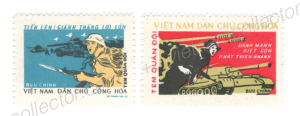
Postally used stamps in perforation 11.0
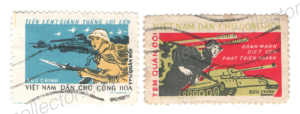
Here are the mint stamps in perforation 12.5 (more scarce).
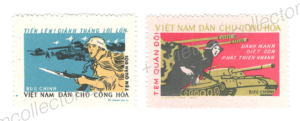
Postally used stamp in perforation 12.5.

While the stamps in perforation 12.5 are definitely harder to find than in perforation 11.0 it is not clear if these two varieties represent two different printings and hence were issued at different times or if both varieties were released at the same time.
Unique hand drawn essay drawing (19.0cmx13.3cm) of the blue military stamp produced by the stamp designer Pham Thanh Tam and signed by him in pencil.
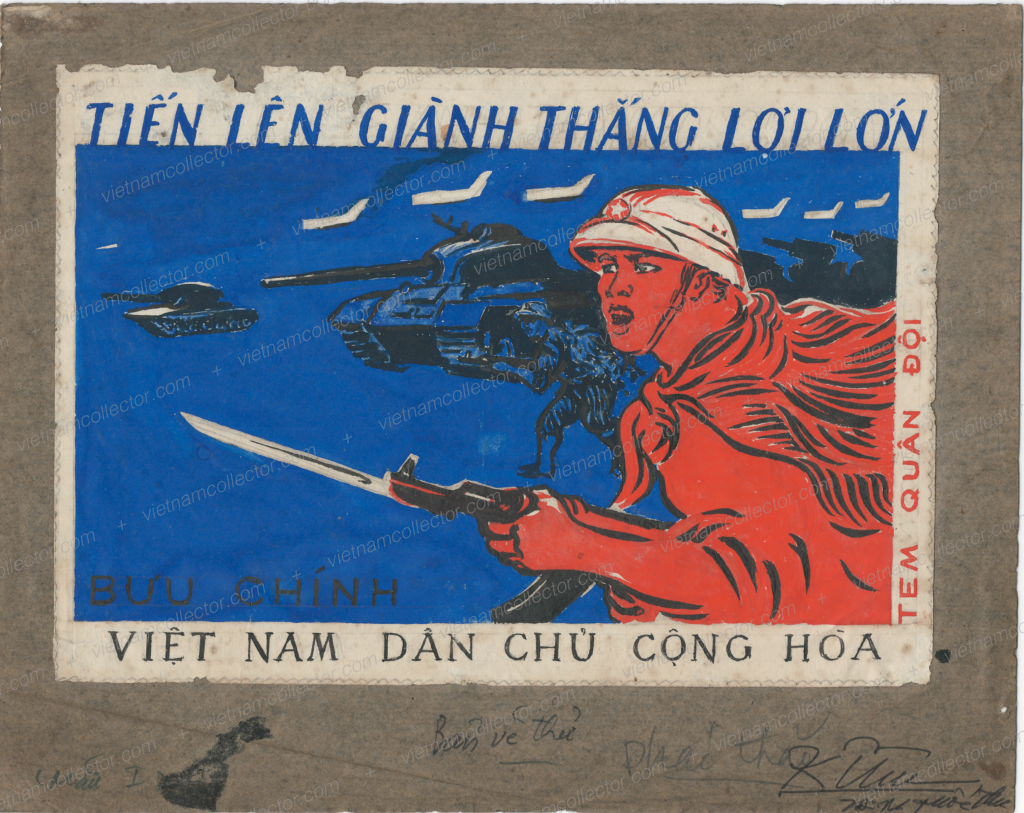
Here are very rare hand-painted essays affixed to a white carton produced by a well known Vietnamese stamp’s designer Tran Huy Khanh. These designs were presented to postal authorities that ultimately selected a version of Pham Thanh Tam as shown above. The carton is signed by the designer. Unique item.
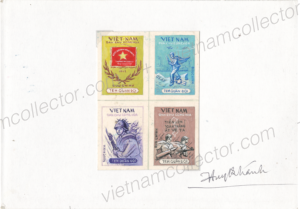
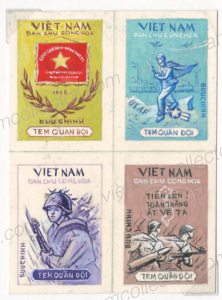
Complete quarter-sheet of the blue military stamp in perforation 11.0. The stamp marked with a red arrow shows the re-occuring plate error “missing I in TIEN”.
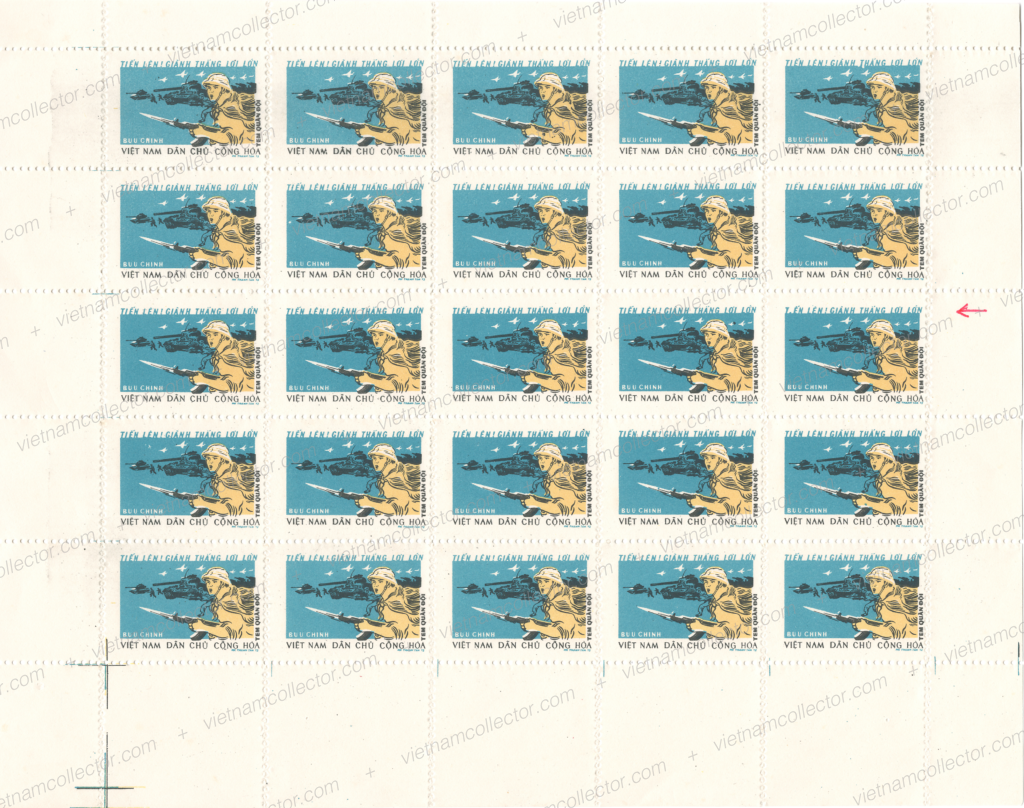
Detailed scan of the affected area.
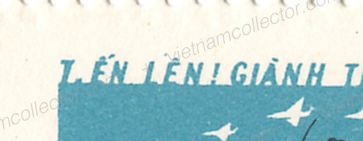
Here is a mint block of four in perforation 12.5 that shows the same plate error of “missing I in TIEN”.
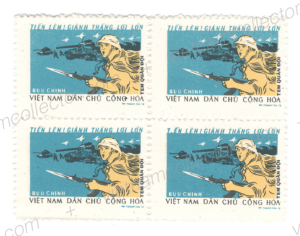
Detailed scan of the affected area.
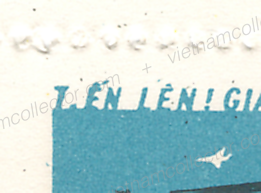
The sheet of 100 stamps was made up of four quarter sheets of 25 stamps each that were separated by horizontal and vertical gutters. Here is a so called heart piece of the blue stamp (in the rarer perforation 12.5) that shows both, the horizontal and vertical gutters.
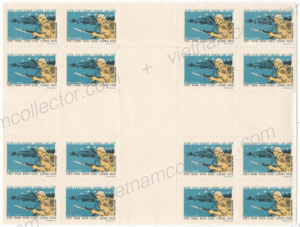
Vertical gutter piece from the right sheet margin (Perf. 11.0) that shows plate errors in Field A5 of the top right side 25 stamp plate (two white dots under the word “Thäng”) and the missing “I” in “TIEN” on Field C5. Only nine stamps are featured for purely technical reasons. Both errors are also repeated on Field A5 and C5 of the bottom right side 25 stamp plate indicating that the same individual cliches were used to produce all four parts of the 100 stamp sheet.

Detailed scan of the plate error in the Field A5
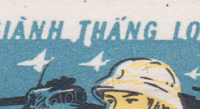
Large piece of twelve of the red stamps (in the rarer perforation 12.5) separated by vertical gutters.
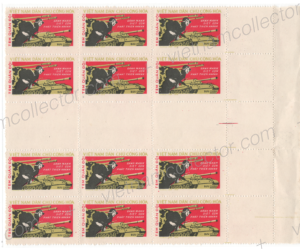
Here is a vertical gutter piece Perf. 12.5 from the left sheet margin (for technical reasons only 8 of the 10 stamps are shown). The stamps in Fields B1 of the top and bottom 25 stamp panel show a plate error “tank in action”. Again, this documents that all four 25 stamp panels were made up from the same set of individual cliches.
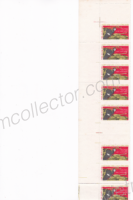
Detailed scan of the affected area:
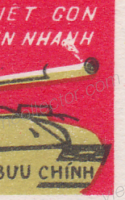
Significant perforation shift on the red military stamp (Perf. 12.5) towards the top of the stamp.
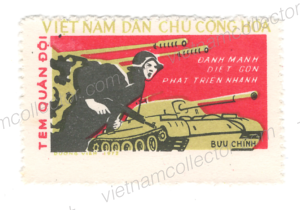
Forged First Day Covers of both stamps. Hanoi was not using cancels that included the zip code in 1973. Based on the latest research these type of cancels were introduced in late 1977.
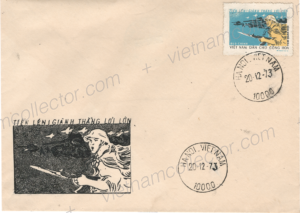
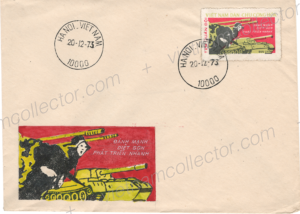
Local letter with the blue stamp (Perf. 11.0) sent to Tan-Yen In May of 1975. Tan-Yen arrival cancel on the reverse.
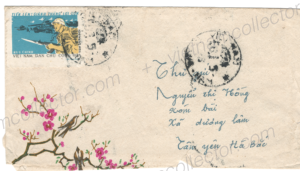
Local letter with the blue stamp (Perf. 11.0) sent to Ho Chi Minh City in September of 1976. Ho Chi Minh machine arrival cancel on the reverse.
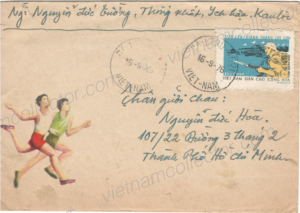
Local letter with the blue stamp (Perf. 12.5) sent from Pho Yen to Saigon in September of 1975. Ho Chi Minh City machine arrival cancel on the reverse.
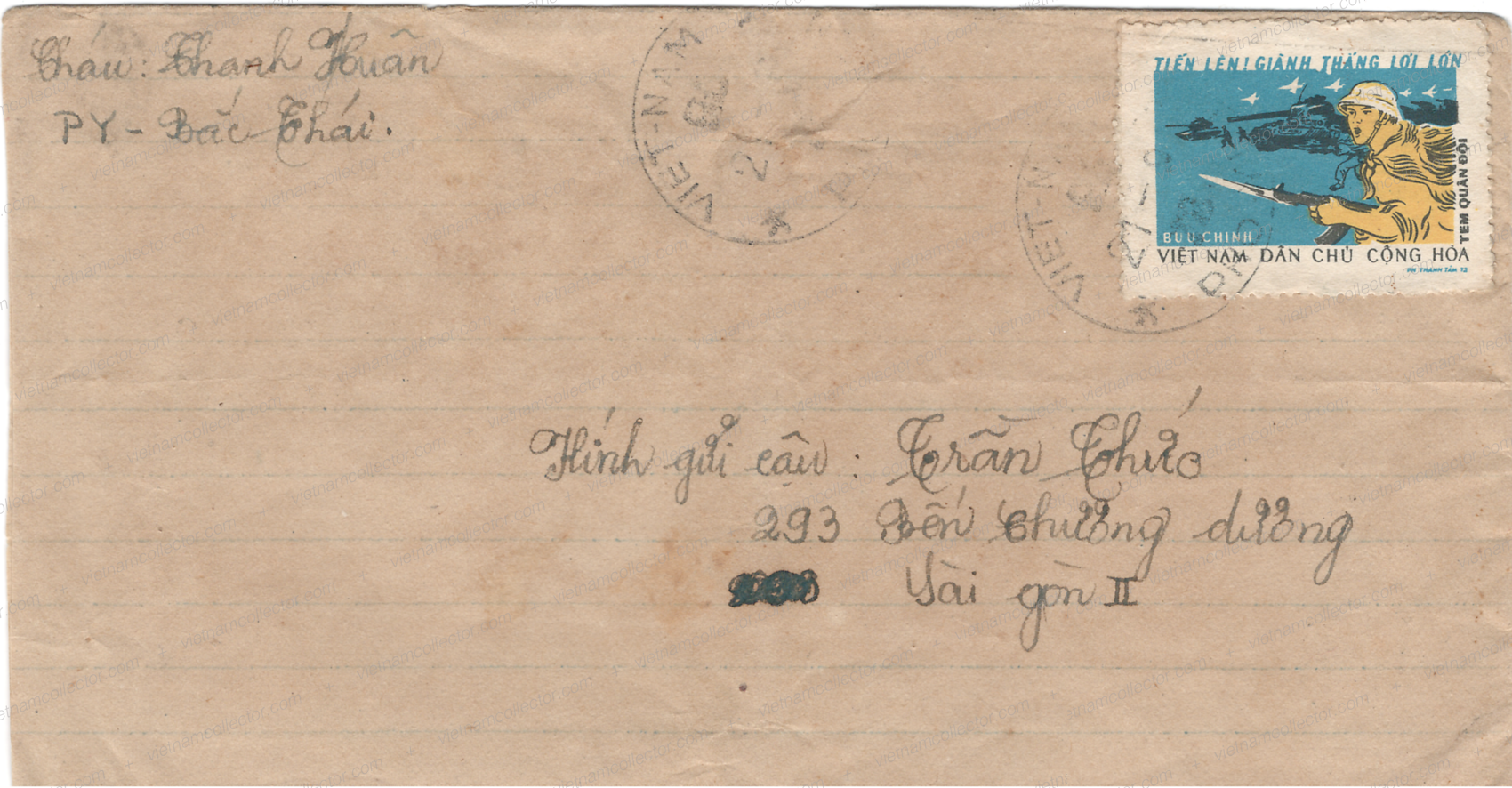
Single franking of the blue stamp (Perf. 11.0) mailed from GIao Phong (small post office) to a soldier in Saigon in July of 1975. The address, after the military Hom Thu number reads “Quan Gai Phong” or “Army of Liberation”, Saigon, Gia Dinh Province. The original NVN troops that took Saigon on April 28-30th, 1975, were given the honor of using the title “Army of Liberation”. The Z8 in the address appears to denote the 8th Independent Infantry Regiment which attacked Saigon from the South out of the Mekong Delta.
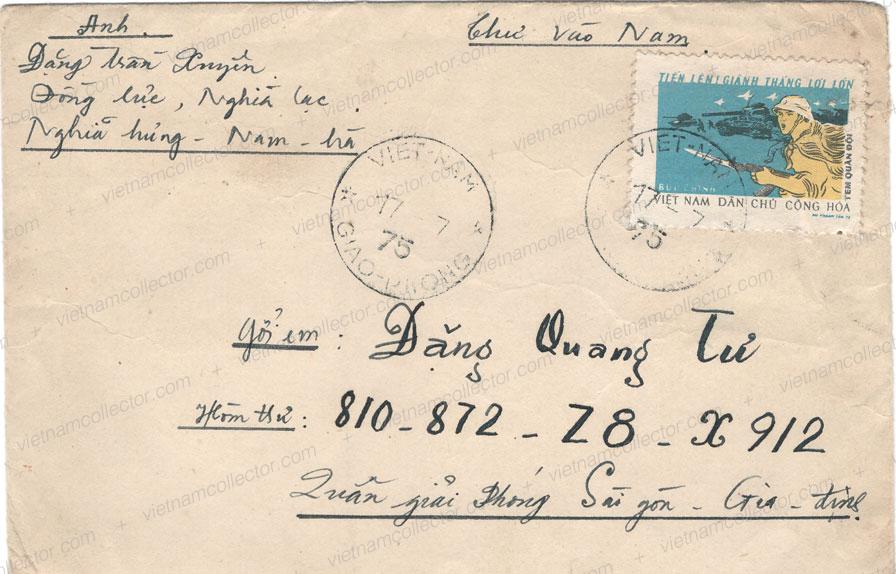
Single franking of the blue free frank (Perf. 11.0) on a letter sent from Cambodia to HCM City in June of 1981.
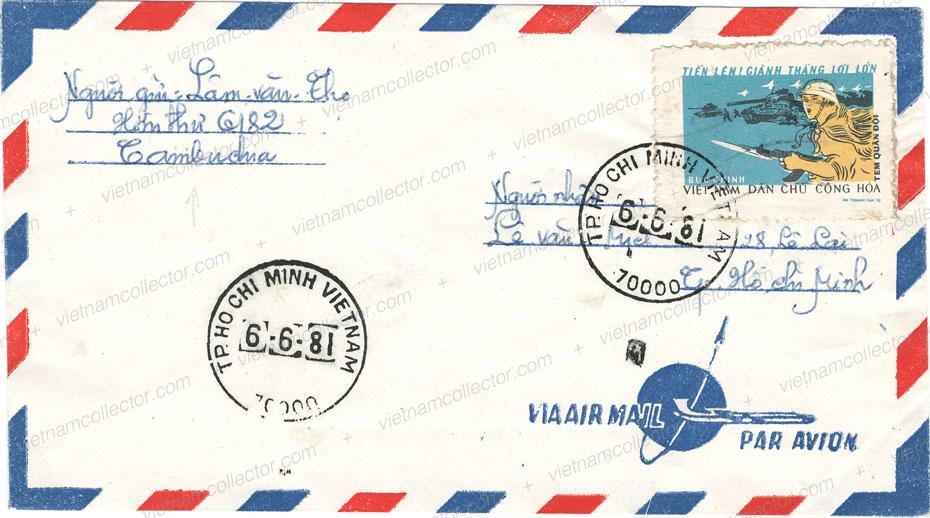
Rare international letter sent by a member of the military (Unit # C110-B50-BC40K) to East Germany in December of 1974. Military free franks were, according to UPS regulation, not valid for postage to international destination as they carried no nominal and were handed out free of charge as a social benefit. Here a letter by a member of the military sent to East Germany. The postal clerk marked up the letter with a black “T” (=postage due) hand stamp as if the letter was not franked at all. The postage to East Germany was 12xu until January 1st, 1975 when it was raised to 60xu. The Vietnamese postal clerk therefore assessed the 12xu paostage due plus 12xu penalty for an overall charge of 24xu. It is unclear if the postage due was collected upon arrival in East Germany.
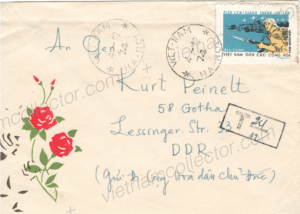
Local letter with the red stamp (Perf. 11.0) sent from Vinh Yen to Hanoi in February of 1975.
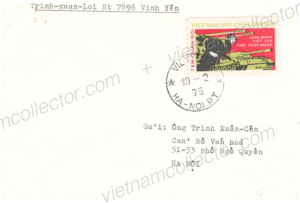
Local letter with the red stamp (Perf. 12.5) sent within Ho Chi Minh City in September of 1980.
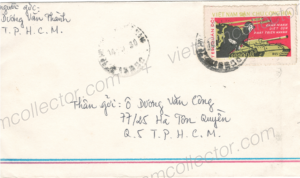
Military Free Franks without any nominal value were not valid for international postage according to UPU rules so they were only intended for domestic usage. Here is a very rare international express mail letter sent to Klewitz from Quan 5 in April of 1981. The letter features both perforation versions (11.0 & 12.5) of the blue military stamp and the red military stamp with the plate error “tank in action” along with other military stamps from the period. It appears that the stamps were accepted by the postal clerk without any issue and that they credited with a 12 xu nominal. The overall postage amounted to 14.76D (including the two red free franks). Kassel transit and Fulda arrival cancels on the reverse. Fragment of green Fukda custom cancel on front.
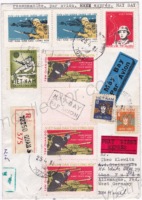
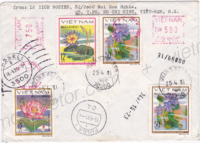
Registration Nr. 102151

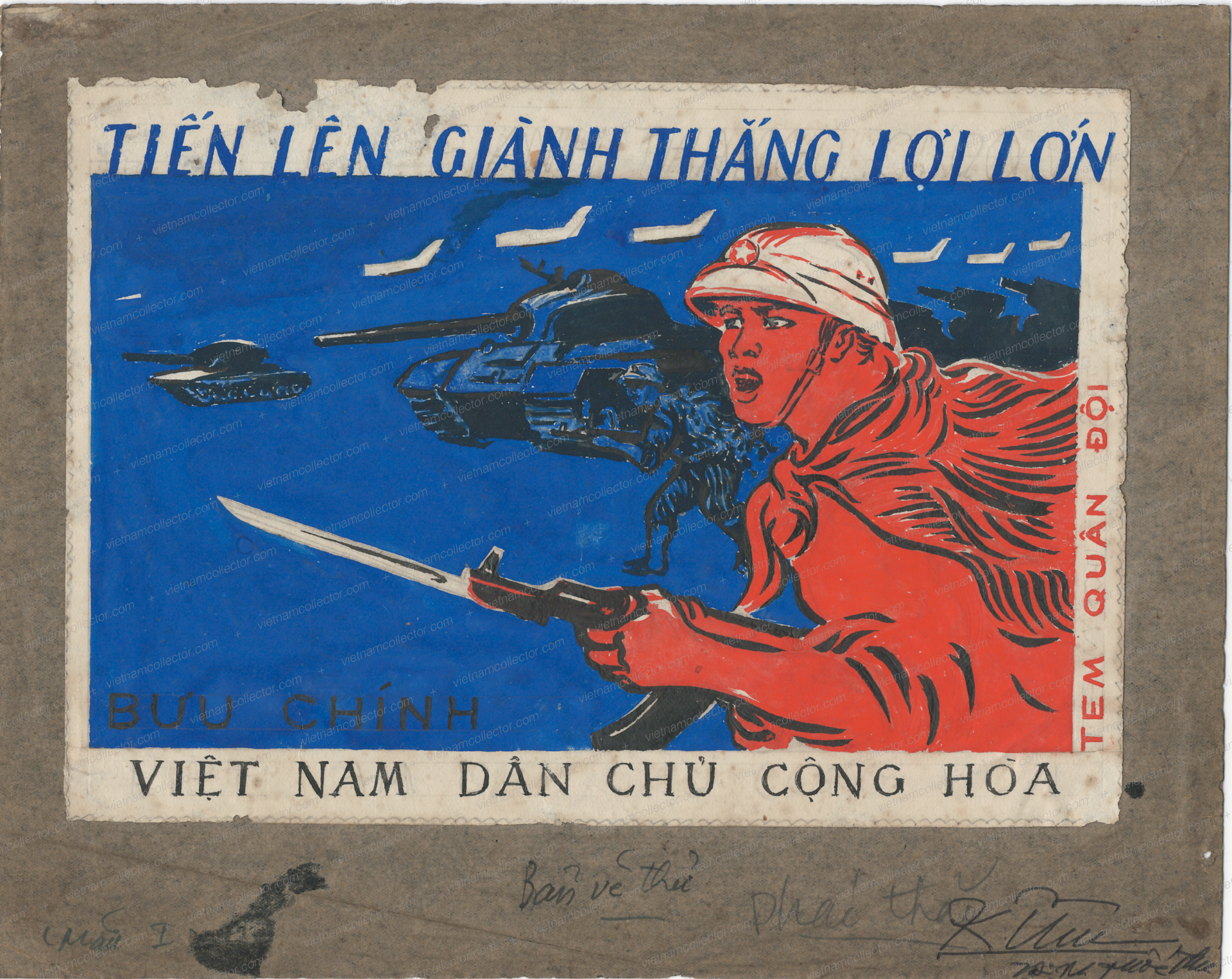
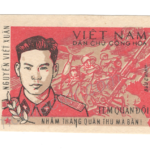
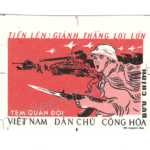


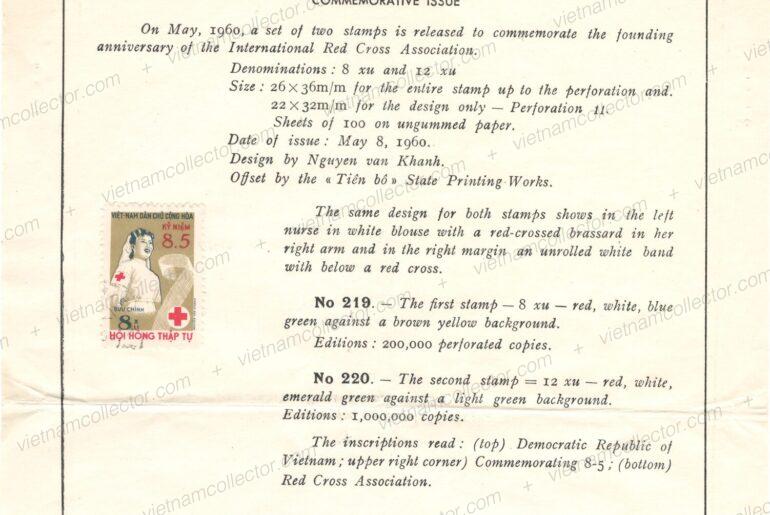
Comments are closed.